If you want to enjoy shirataki noodles or konjac (konnyaku) with a traditional Japanese flavor, this recipe is definitely worth trying. Shirataki Amakarani is a dish in which the noodles are infused with and coated in a sweet and savory glaze. I hope you enjoy this comforting flavor, which is commonly found in Japanese homes.
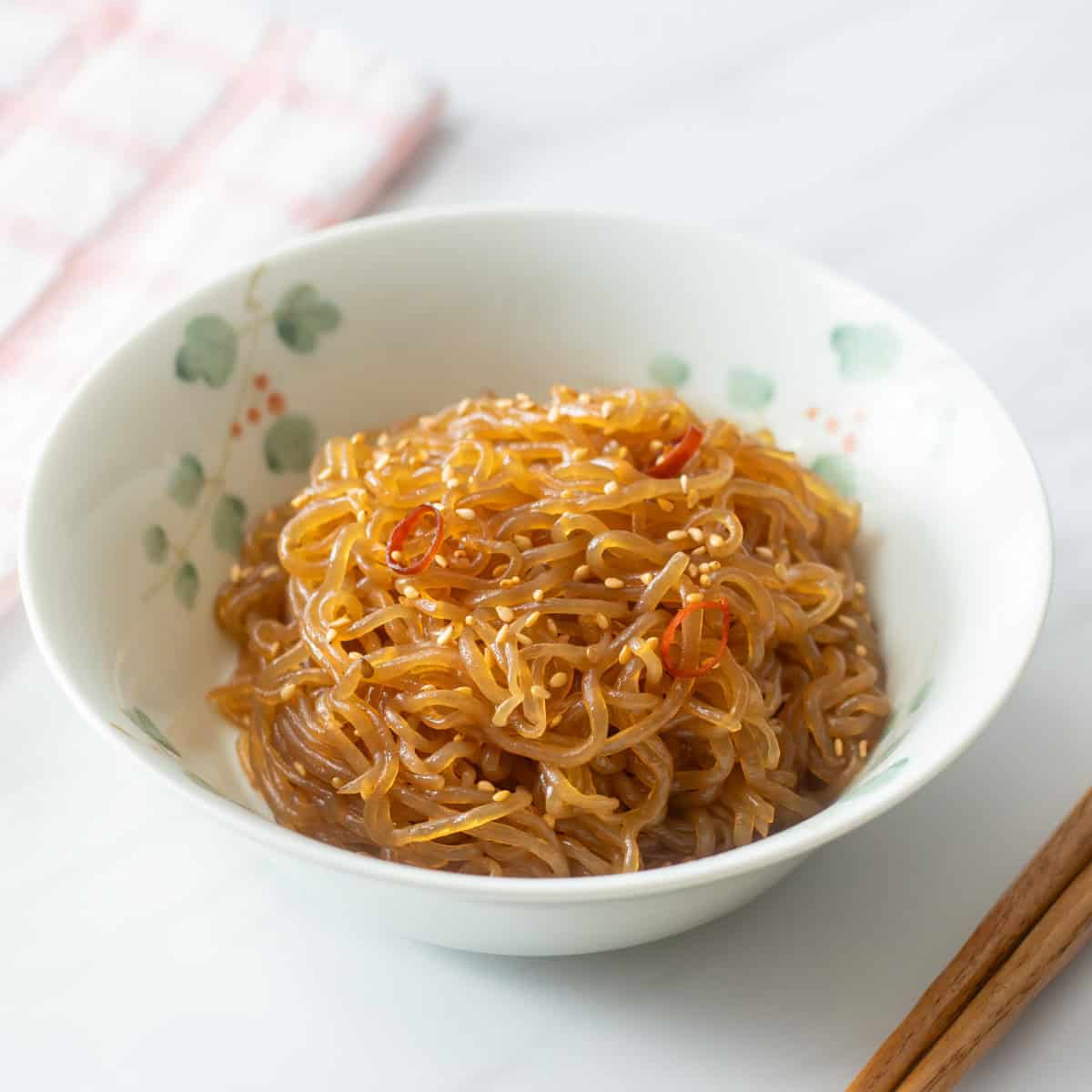
Jump to:
What is Shirataki Amakarani?
Shirataki Amakarani is a Japanese dish made by stir-frying shirataki noodles to remove excess moisture, then simmering them in a sweet and savory mixture of Japanese seasonings. "Amakara" means sweet and savory in Japanese, and "ni" refers to simmering. Since this dish involves a stir-frying step, it is also called "Amakara-Itame" (with "itame" meaning stir-fried).
In Japan, there is a traditional dish called "konjac amakarani," which uses konjac blocks instead of shirataki noodles. Shirataki amakarani is a home-style variation of this classic dish. While konjac blocks are commonly available in Japan, I have found that shirataki noodles are easier to find abroad, so I’m sharing the recipe here using shirataki noodles.
That said, I have also included instructions for making konjac amakarani toward the end of this article. If you would like to try the more traditional version using konjac blocks, be sure to check it out as well (the only difference is the texture; the flavor is essentially the same).
Shirataki or konjac, infused with flavor, is low in calories yet satisfying and filling. Whether you are on a diet, following a plant-based lifestyle, or simply looking for a tasty Japanese dish, this is a great choice. Give it a try and add it to your regular rotation!

So, what are shirataki noodles?
Even if you have tried shirataki noodles before, some people might not actually know what they are made of.
Shirataki noodles are made from konjac, which is shaped into long, thin strands. Konjac is made by grating the konjac yam root, mixing it with a natural coagulant, and then boiling it. Therefore, the only real difference between shirataki noodles and konjac is their shape. In other words, "konjac noodles" and "shirataki noodles" are essentially the same.
These noodles are made up of about 97% water and roughly 3% konjac yam root, which is why they are almost flavorless on their own, yet they have some distinct qualities:
- Chewy and bouncy texture
- Easily absorb flavors
- Extremely low in calories
- Very low in carbohydrates
- Rich in dietary fiber
- Filling and satisfying
In Japan, they are a common ingredient in a variety of dishes. They are especially popular among people on diets, and many use them as a substitute for pasta or ramen noodles to reduce carbohydrate intake, or mix them into rice to make "shirataki rice."
How to reduce the odor from shirataki noodles
Shirataki noodles are known for being healthy, but they have one drawback: their distinctive odor.
This odor comes from the coagulant (such as calcium hydroxide) used to solidify the ground konjac yam root, which is the key component of shirataki noodles. While the smell isn’t harmful, reducing it can make the noodles more enjoyable. To do this, it is common to prepare the noodles before cooking using one or both of the following methods:
- Rub them with salt or sugar: This helps draw out excess moisture from the shirataki noodles through osmosis, which reduces the odor.
- Boil them: Boiling the shirataki noodles allows the coagulant compounds to dissolve, helping reduce the odor.
In this recipe, I use both methods, but if you don't mind the smell or are using shirataki noodles that have already been pretreated to minimize the odor, you can use just one of these methods or even skip the prep entirely. However, if you find the smell noticeable, I highly recommend combining both methods for the best results.
How to bring out the best flavor
Once you have finished prepping the shirataki noodles, making this dish is quite easy. Just give the prepared noodles a quick stir-fry, then simmer them with the seasonings.
A key tip for making it delicious is not to skip the stir-frying step. Stir-frying helps evaporate any excess moisture from the noodles, allowing the seasonings to soak in more effectively. It is a small step, but it makes a big difference in how well the flavors penetrate. Be sure to follow the recipe as written, and you will end up with a dish that is richly infused with flavor!
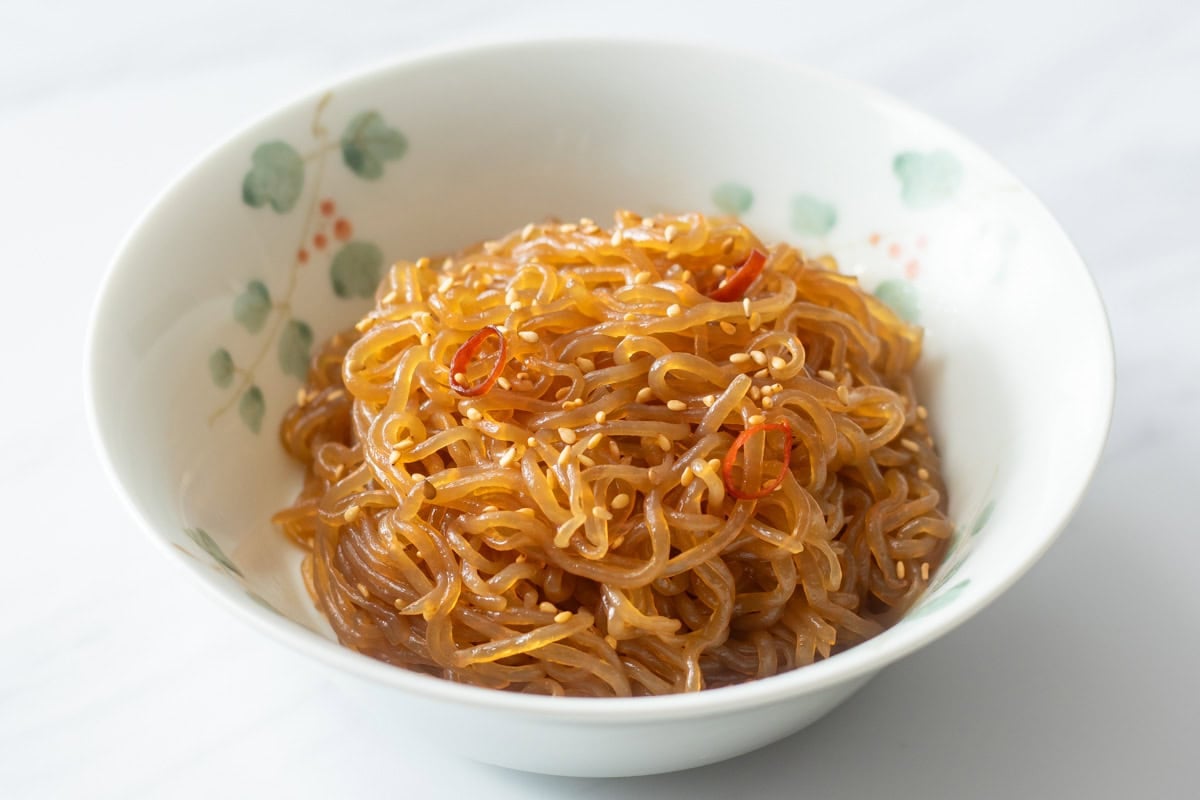
📋Step-by-step recipe
Ingredients
- 7 oz shirataki noodles (konjac noodles)
- ½ Tbsp salt or sugar (for preparing the shirataki noodles)
Seasonings:
- 1 Tbsp sake
- 1 Tbsp mirin
- ½ Tbsp sugar
- 1 ¼ Tbsp soy sauce
- ½ small dried chili pepper (sliced or ground; adjust to taste)
- 1 tsp toasted sesame oil
Topping (optional):
- toasted sesame seeds
Instructions
🕒 Total: 20 mins
Step 1
Place the shirataki noodles in a strainer, then rub them with either salt or sugar. Let them sit for about 5 minutes, then rinse under running water and drain.
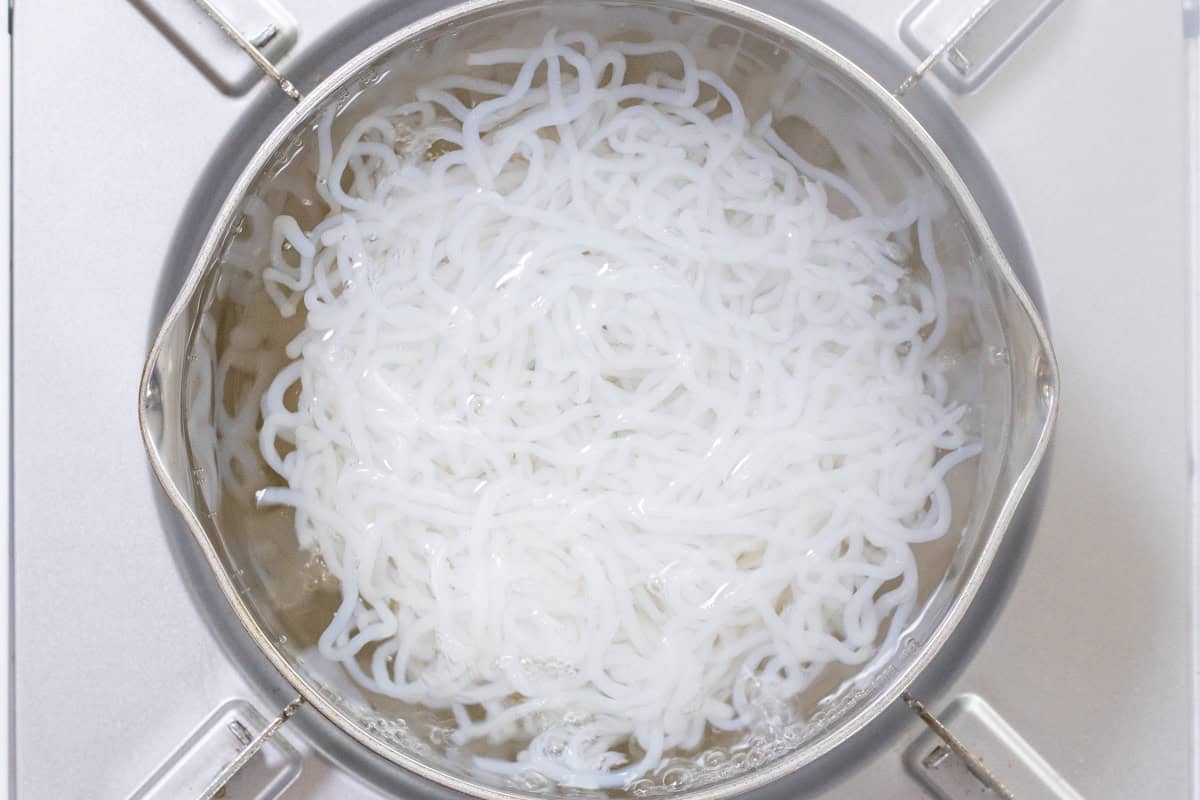
Step 2
Add the shirataki noodles to a pot of water and bring it to a boil. Once boiling, reduce the heat to low and let them simmer for about 2 minutes. Drain the noodles, then rinse the pot and wipe it dry.
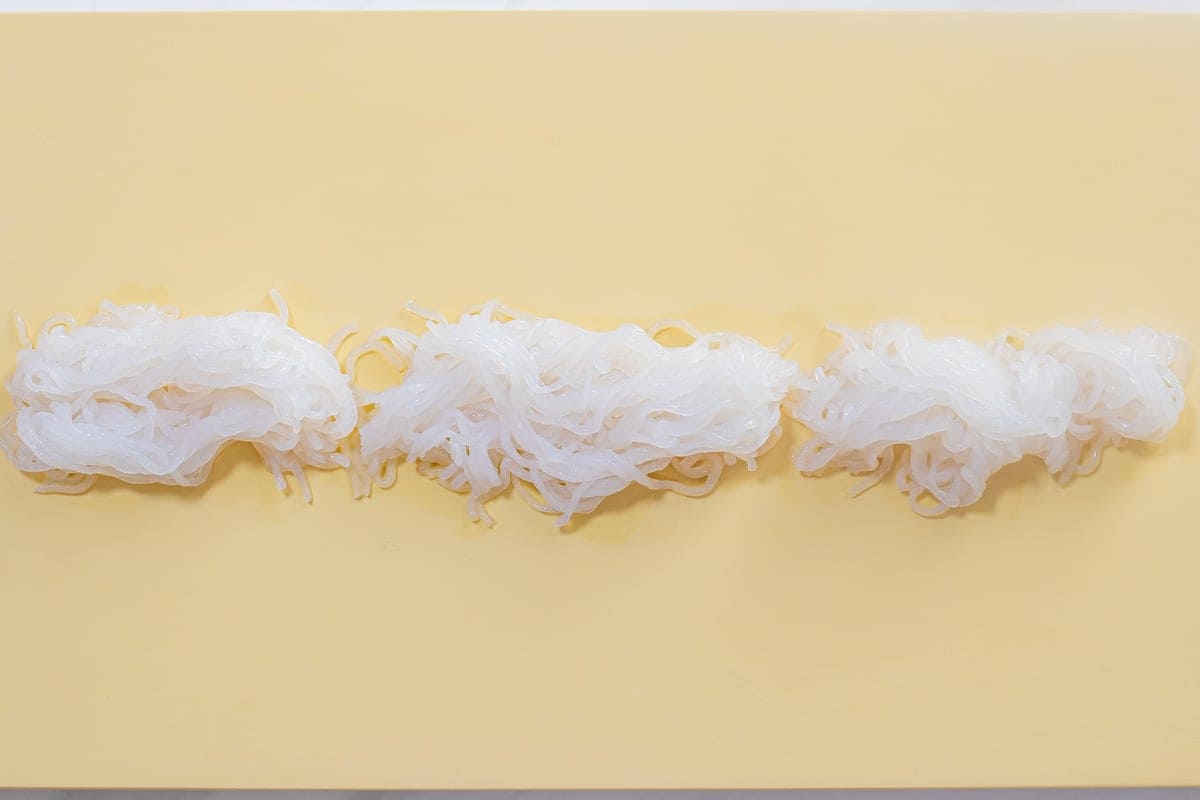
Step 3 (optional)
Cut the shirataki noodles into 2 or 3 shorter, bite-sized lengths with kitchen scissors or a knife.
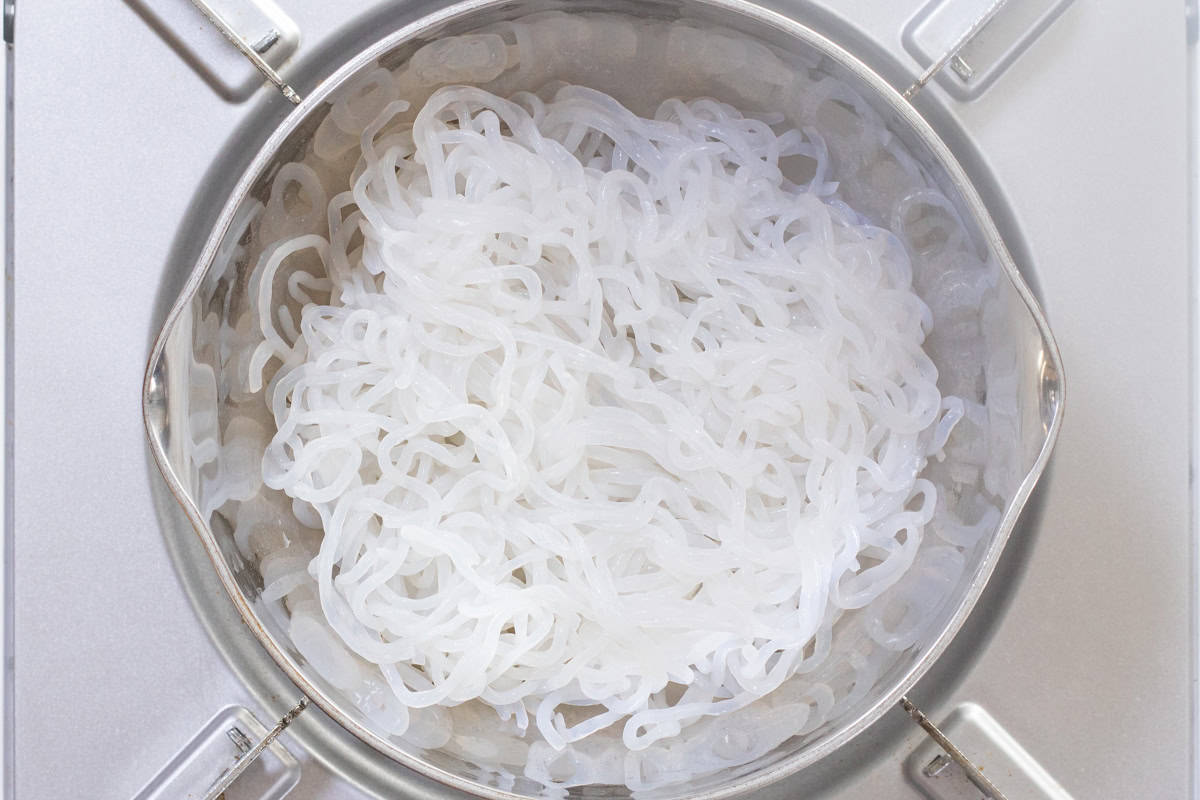
Step 4
Put the pot (or a pan) on the stove and add the shirataki noodles. Stir-fry them over medium heat for 1-2 minutes to evaporate any excess moisture.
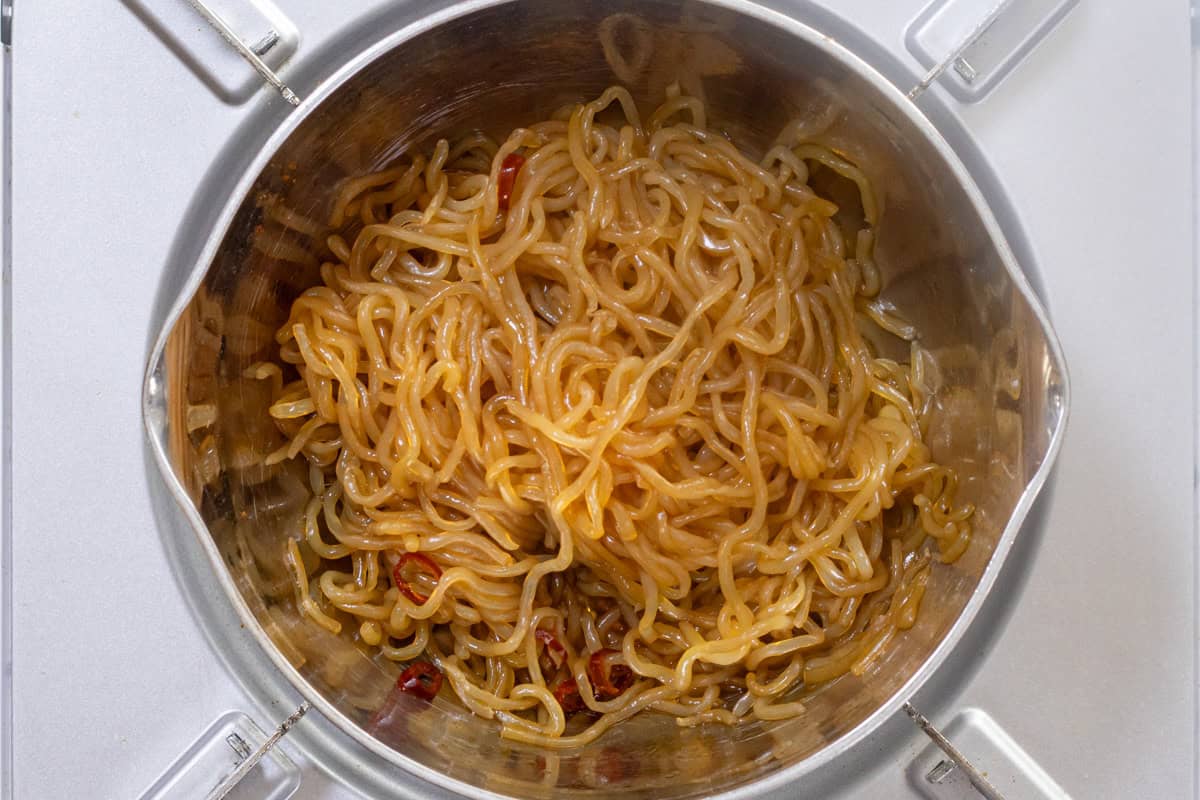
Step 5
Turn off the heat, then add sake, mirin, sugar, soy sauce, and chili pepper. Return to medium heat and simmer until most of the liquid has been absorbed, stirring occasionally.

Step 6
Remove from the heat and toss the noodles with sesame oil. Feel free to sprinkle toasted sesame seeds on top to taste. This dish is delicious served fresh, but it also tastes great chilled from the refrigerator.
To store
You can store it in the refrigerator for up to a week.
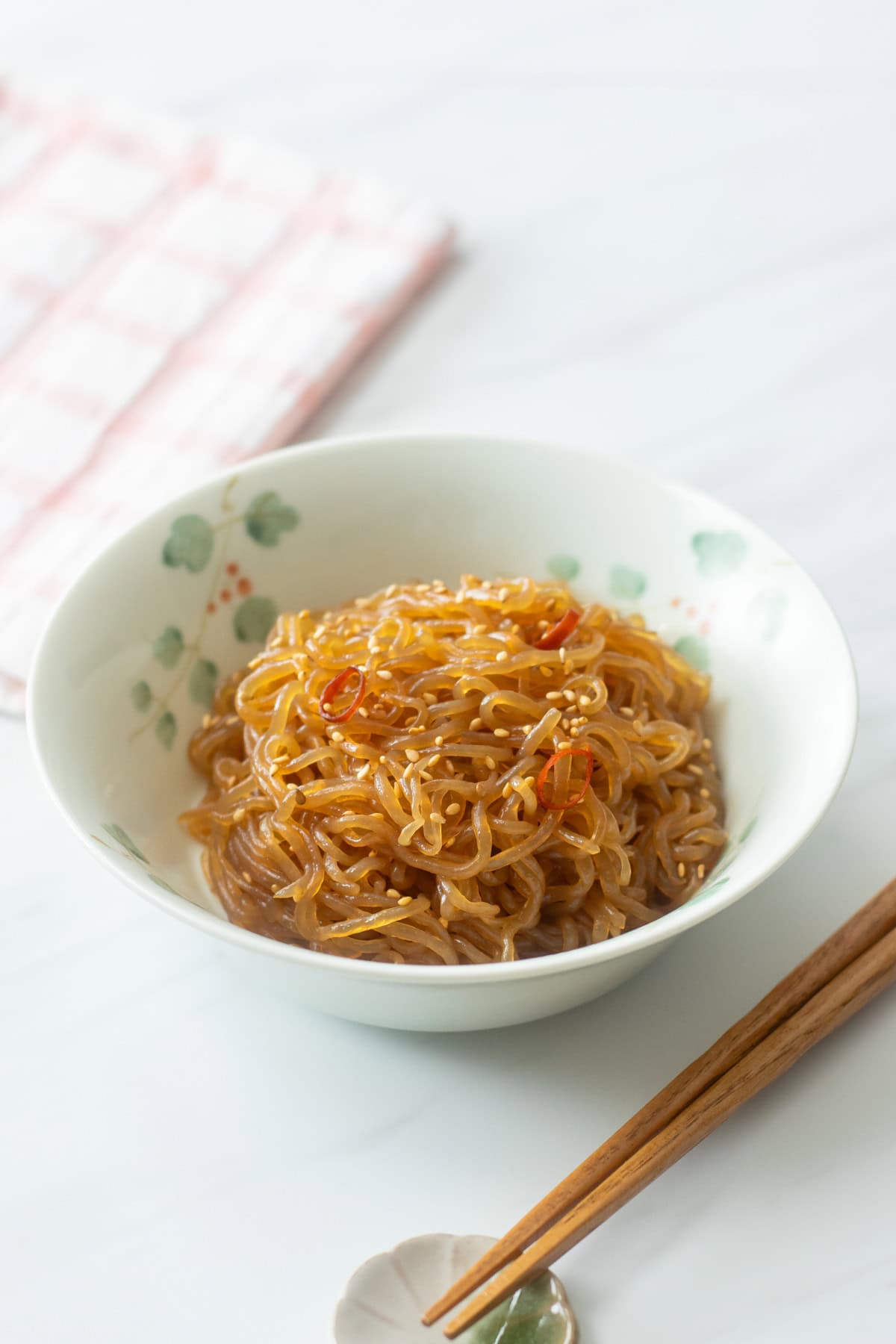
Konjac Amakarani: the traditional version
Shirataki amakarani is a home-style Japanese recipe derived from a traditional dish called “konjac amakarani,” which uses konjac blocks. If you are interested in Japanese cuisine and want to try the original version, replace the shirataki noodles with konjac and add the following two steps before step 1 in the recipe above:
- Score a crisscross pattern on both sides of the konjac block.
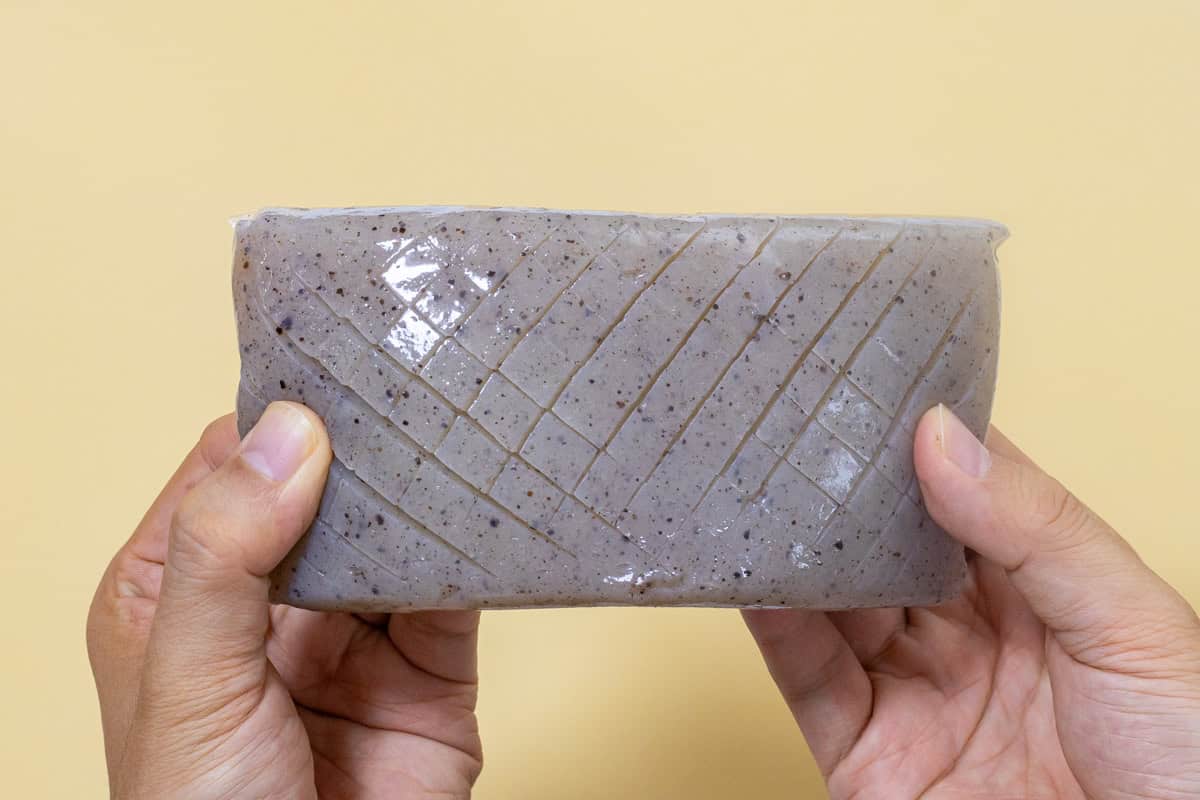
- Cut the konjac into bite-sized pieces using a spoon. (Using a spoon instead of a knife creates an uneven surface that helps the flavors absorb better.)
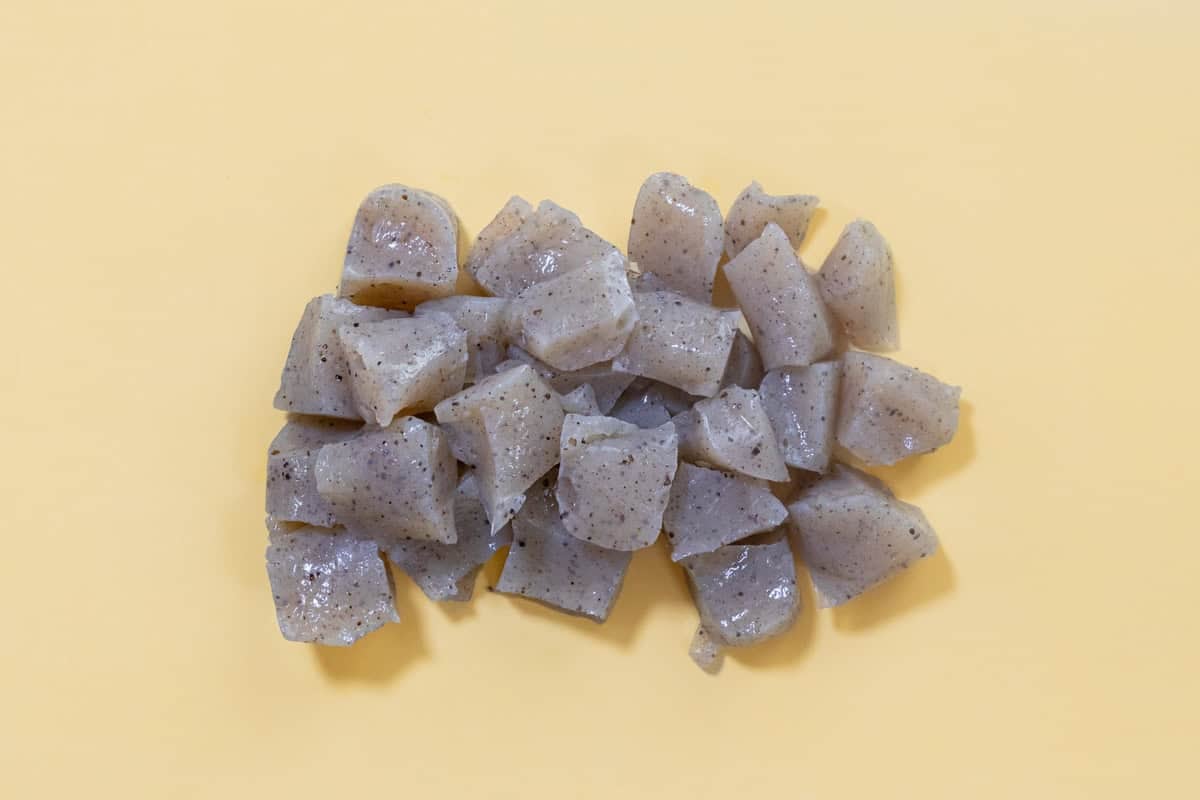
The only difference between konjac and shirataki noodles is their shape, so the taste of "shirataki amakarani" and "konjac amakarani" is essentially the same. However, in Japan, the konjac version is more commonly enjoyed. If konjac blocks are available in your area, feel free to try this version as well.

If you try this recipe, I’d love to hear what you think. Please consider leaving a review and star rating in the comments below. If you enjoyed it, I’d really appreciate it if you shared it with your friends.
Recipe card

Shirataki Amakarani (Japanese Sweet and Savory Konjac Noodles)
Ingredients
- 7 oz shirataki noodles (konjac noodles)
- ½ Tbsp salt or sugar (for preparing the shirataki noodles)
Seasonings:
- 1 Tbsp sake
- 1 Tbsp mirin
- ½ Tbsp sugar
- 1 ¼ Tbsp soy sauce
- ½ small dried chili pepper (sliced or ground; adjust to taste)
- 1 tsp toasted sesame oil
Topping (optional):
- toasted sesame seeds
Instructions
- Place the shirataki noodles in a strainer, then rub them with either salt or sugar. Let them sit for about 5 minutes, then rinse under running water and drain.
- Add the shirataki noodles to a pot of water and bring it to a boil. Once boiling, reduce the heat to low and let them simmer for about 2 minutes. Drain the noodles, then rinse the pot and wipe it dry.
- (Optional) Cut the shirataki noodles into 2 or 3 shorter, bite-sized lengths with kitchen scissors or a knife.
- Put the pot (or a pan) on the stove and add the shirataki noodles. Stir-fry them over medium heat for 1-2 minutes to evaporate any excess moisture.
- Turn off the heat, then add sake, mirin, sugar, soy sauce, and chili pepper. Return to medium heat and simmer until most of the liquid has been absorbed, stirring occasionally.
- Remove from the heat and toss the noodles with sesame oil. Feel free to sprinkle toasted sesame seeds on top to taste. This dish is delicious served fresh, but it also tastes great chilled from the refrigerator.
Notes
- You can store it in the refrigerator for up to a week.

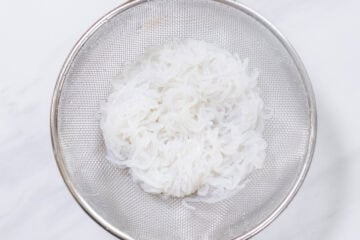
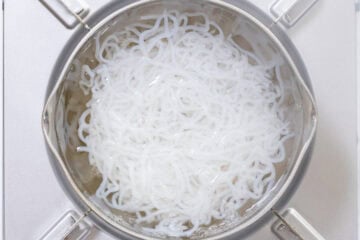
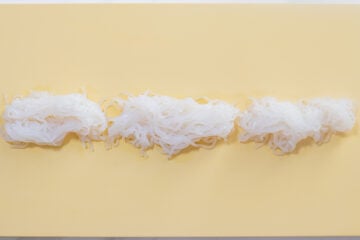
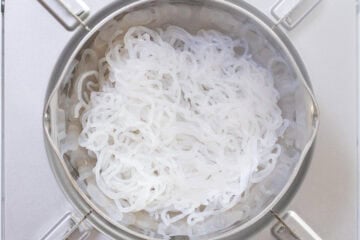
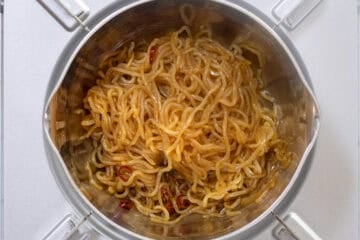
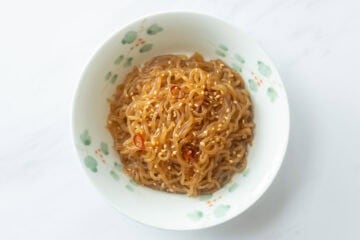

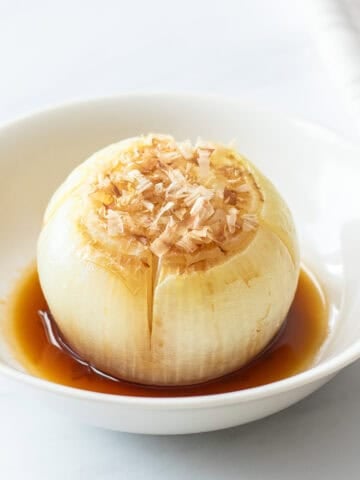
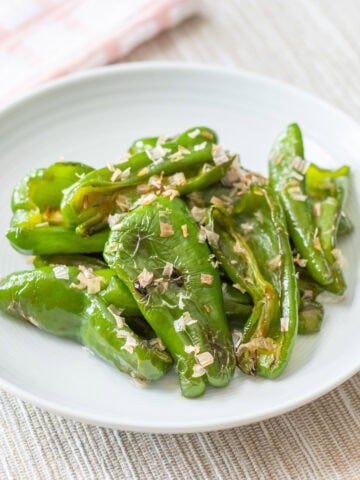
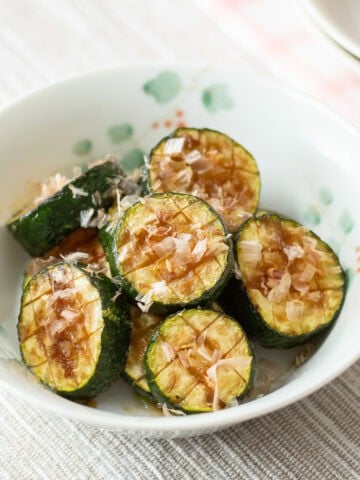
Leave a Rating and a Comment